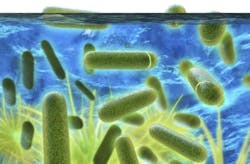BIRMINGHAM — In Water Technology’s September article, “Preventing Legionnaires’ disease and other waterborne bacteria through long-term secondary water treatment,” Tory Schira, a contributing author writes about the increased legionella outbreaks, especially in drinking water systems, and how this is causing facility managers and workers to search for dependable and effective solutions.
In the article Schira explains a few common steps facilities can take when faced with an outbreak. “When legionella are found through water testing, action must be taken,” Schira explains. “The standard does not emphasize one modality over another.”
He continues by offering various immediate legionella remedies:
- Superheat and flush is often an effective short-term fix in cases of an outbreak. Vendors experienced with this method should oversee the process, as it invariably fails if healthcare facilities personnel supervise the method. The temperature at the tap and duration of the flush need to be documented by infection control practitioners.
- Hyperchlorination entails the introduction of chlorinated salts to the water using a mechanical chlorinator. This raises chlorine levels throughout the system for one to two hours, long enough to kill bacteria. This method is efficacious in initial or emergency disinfection. Chlorine concentrations have to be monitored compulsively; if chlorine concentrations drop below disinfection levels, legionella quickly re-enters the water distribution system, studies show. Thus, regular use of this chemical must occur, leading to human health risks and damage to water pipes, which corrode with long-term hyperchlorination.
“For long-term remediation, a number of modalities have been employed,” adds Schira, which include:
- In a copper silver ionization system, a flow-cell chamber containing sacrificial copper and silver electrodes is attached to the water supply. A direct current is applied across these electrodes to stimulate the controlled release of ions. The ions form electrostatic bonds with negatively charged sites on microorganism cell walls. These bonds create stresses that lead to distorted cell wall permeability, reducing the normal intake of life-sustaining nutrients. This action, coupled with protein denaturation, leads to cell disintegration and death. Copper silver ionization is the only water disinfection method for which multiple field evaluations of efficacy have been published in peer-reviewed literature. A major 2011 review of all of the existing modalities for remediation of legionella found that “copper silver ionization appears to be the best available technology today for controlling legionella colonization in hospital water systems.”
- Chlorine dioxide is an easy to generate synthetic gas proven in studies from Europe and a leading American university research hospital to take more than a year to become efficacious in killing legionella. It breaks down into chlorite and chlorate, both of which have water limits. Chlorine dioxide must be made on-site and the costs associated with training, sampling and laboratory testing for chlorite and chlorate are high.
- Monochloramine, a compound produced by adding chlorine to a solution containing ammonia, is considered effective against legionella in the biofilm of model plumbing systems. Two case-control studies have suggested that hospitals in municipalities supplied with domestic drinking water treated with monochloramine were less likely to report cases of hospital-acquired Legionnaires’ disease. The efficacy of onsite monochloramine treatment in individual hospitals has not yet been studied over a prolonged period. A 2002 CDC study using a model plumbing system with biofilm containing legionella and other pathogens compared free chlorine and monochloramine as disinfectants. It found that monochloramine was significantly more effective than chlorine against legionella in a mixed culture bacterial biofilm.
You can find the September feature on legionella here.
